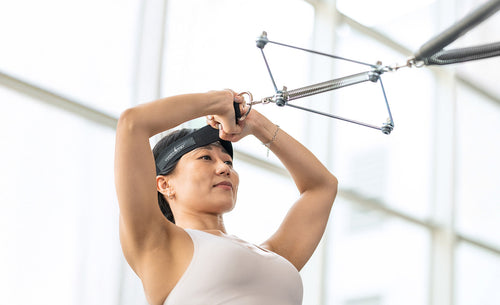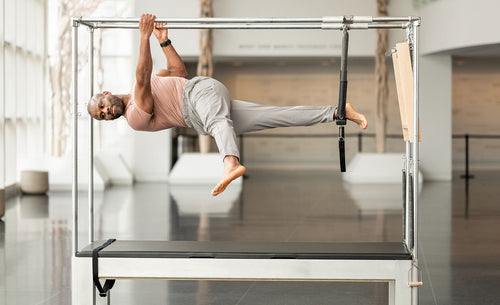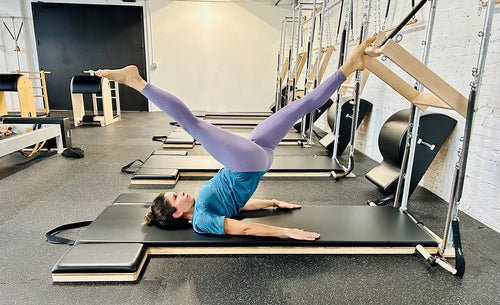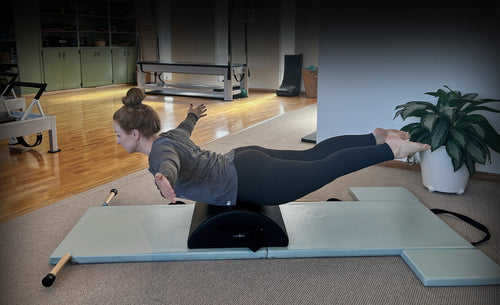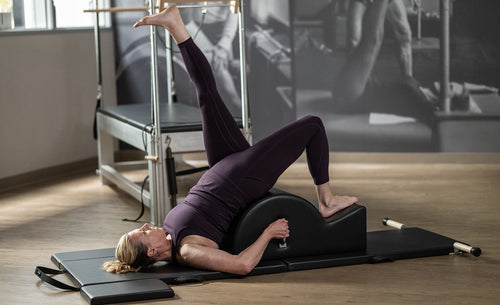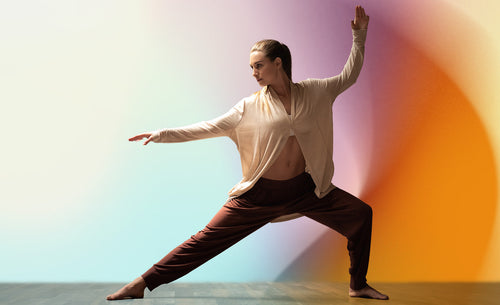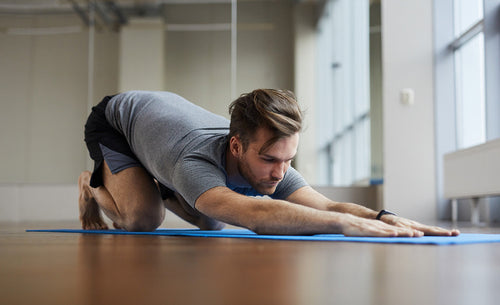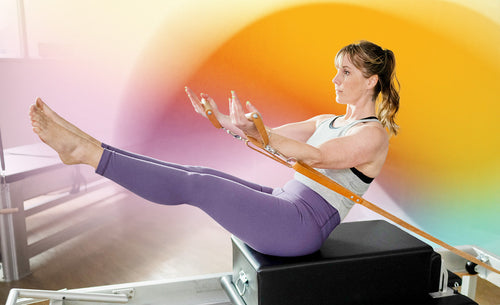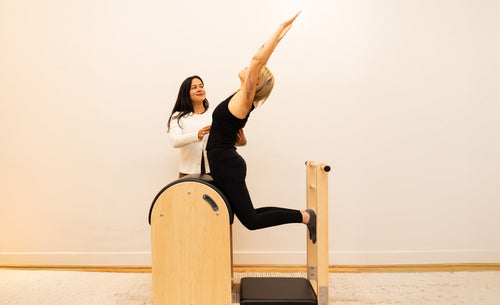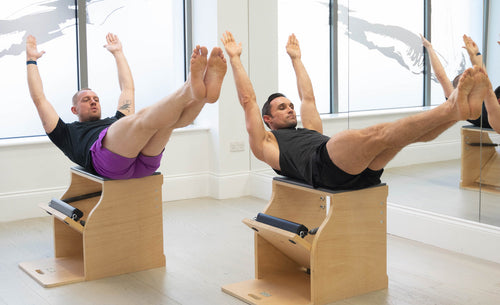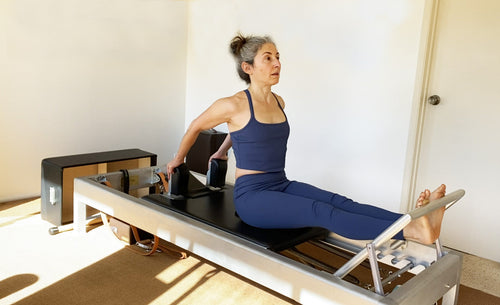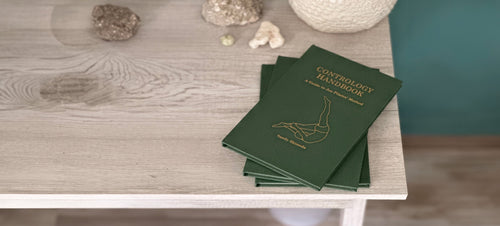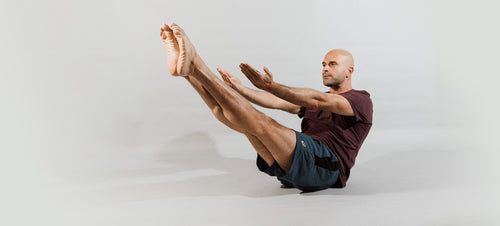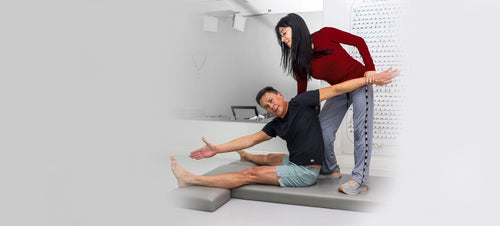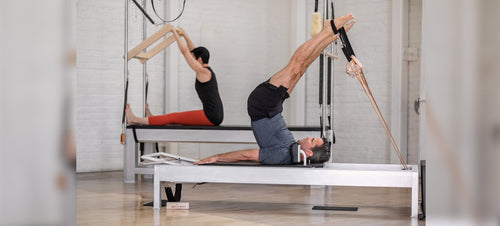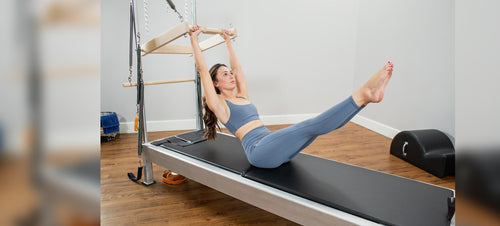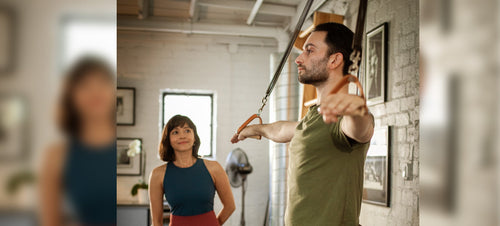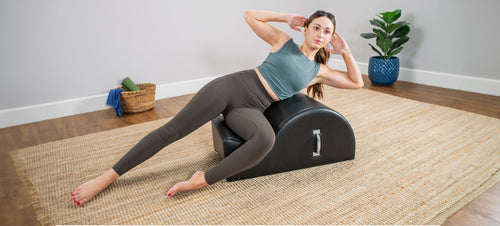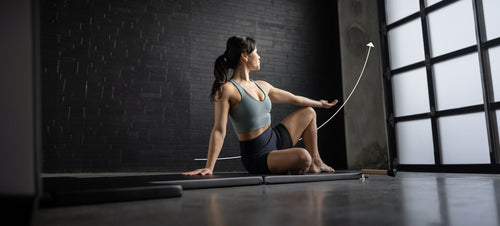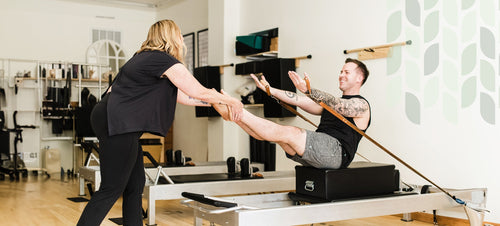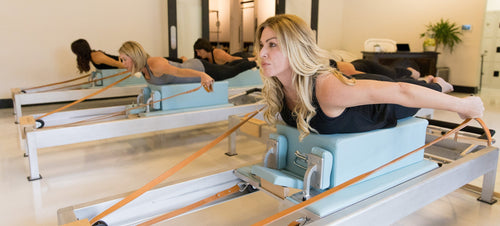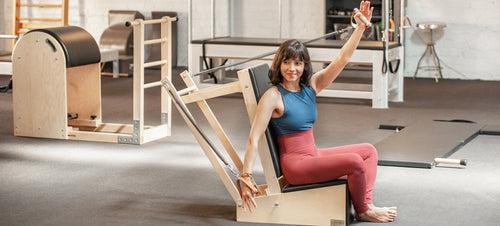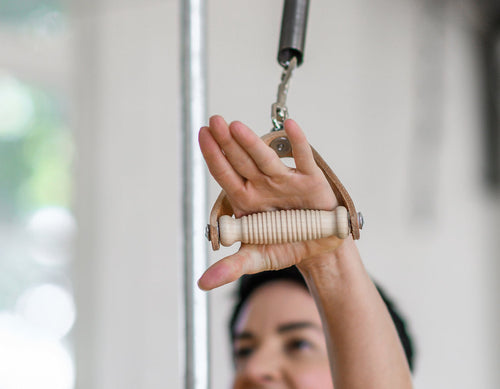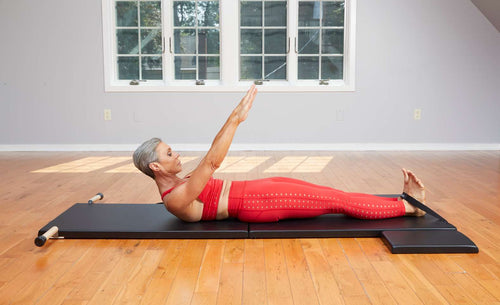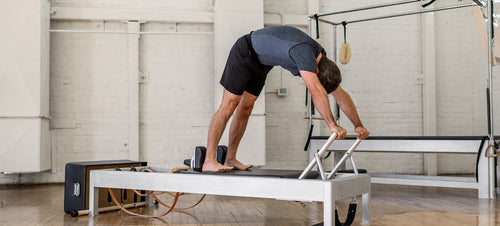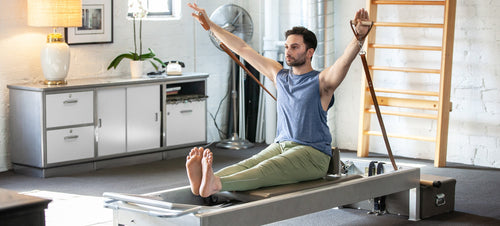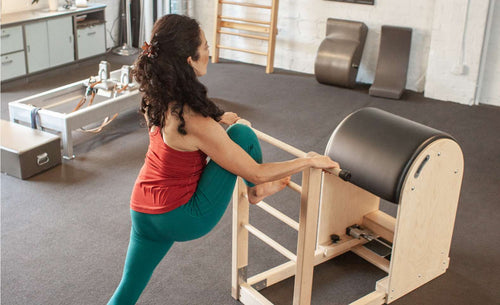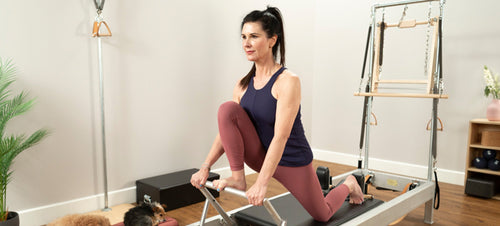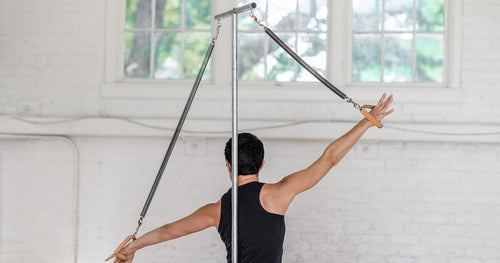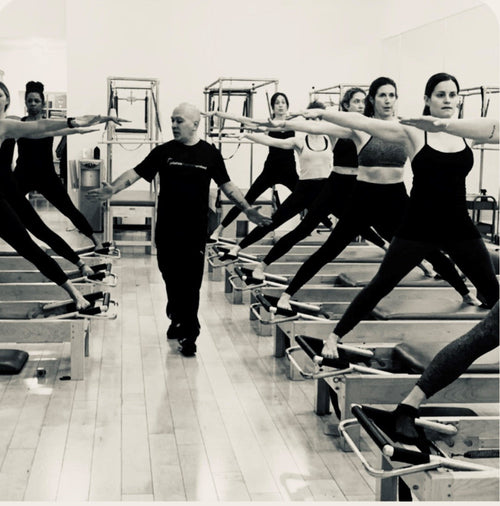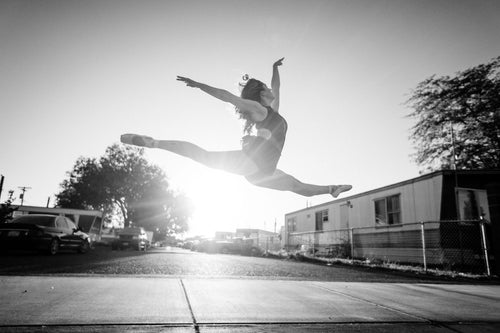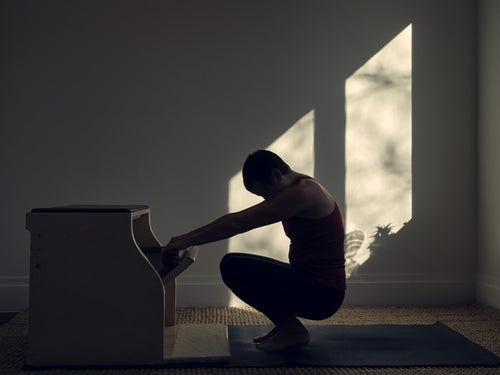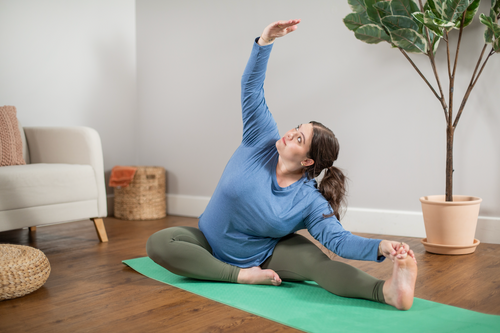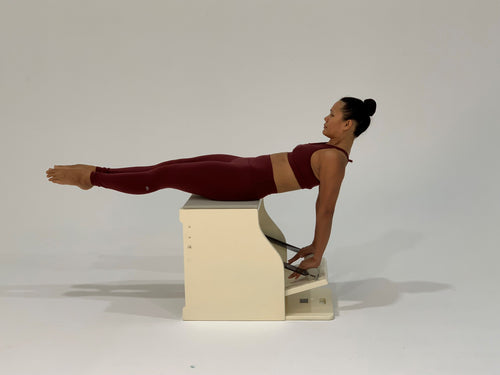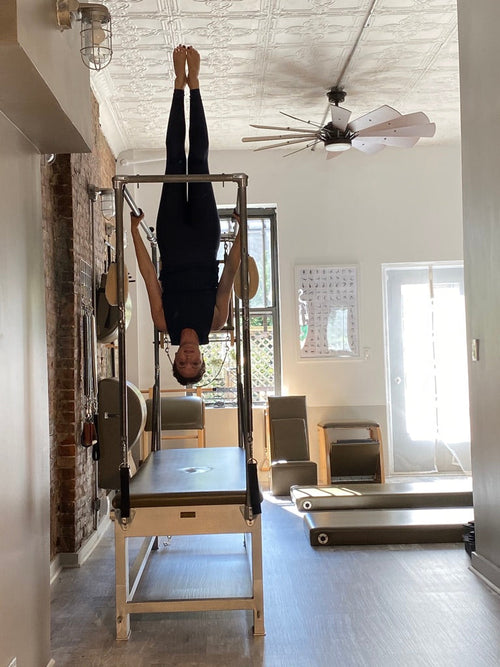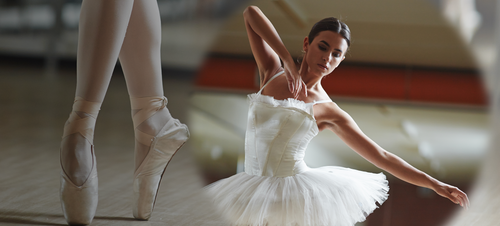The Knee Stretch Series is a core sequence in classical and contemporary Pilates that targets abdominal connection, trunk stability, and spinal mobility. This series has two distinct approaches to the Knees Off variation—the contemporary Jackrabbit and the classical Tiger Stretch (archival name). By varying the position of the spine, we can change the emphasis or intention of the exercise.
Knee Stretch Knees Off: The Jackrabbit
Balanced Body's Reformer training introduces the Knee Stretch Series in Level 1. This series focuses on strengthening the quads, hamstrings, glutes, and abdominals while promoting pelvic and scapular stability. It starts with two variations: flat back and round back. The flat back emphasizes a stable pelvis and a "hip hinge." In contrast, the round back focuses on spinal mobility by maintaining lower spinal flexion throughout the movement.
In Level 2, we introduce the "knees off" version, also known as the "jackrabbit." The Jackrabbit adds significant upper-body stabilization and intensity, evolving the flat back position from Level 1 by incorporating a floating knee stretch. This progression deepens the demands of the two beginner-level versions by challenging strength and stability across the body. Floating the knees off in the flat back position adds significant demand and load to the quadriceps, hamstrings, and glute muscles, especially as the knees hover closer to the carriage.
Cues for Execution:
• Springs:1 Red, 1 Blue
• Footbar: High position
• Kneeling on the carriage, hover the knees off of the footbar and press the carriage back slightly away from the stoppers. Propel the carriage back with knees, maintaining a flat back and stable pelvis. The shoulders and upper body stay in the same position throughout the exercise.
• Keep the knees in a low hover to increase the challenge.
The Tiger Stretch
The Knee Stretch Series—The Round, The Arched, and Knees Off—is introduced within a student's first five to ten sessions of classical Pilates. This sequence teaches trunk stabilization in flexion and extension while building awareness and strength in the backline and developing strength in the hamstrings and seat. The fluid transitions between these positions help develop spinal flexibility and prepare students for more advanced exercises like the Up Stretch, High Frog, and Snake Twist.
Let's focus on the Knees Off, the most challenging in the series. Unlike its contemporary counterpart, The Jackrabbit, this exercise is introduced in our foundational system. It is designed to be a challenge that pushes students beyond their comfort zone, enhancing strength and mechanics. It is also performed with a round back, maximizing the lower abdominal and hip flexor engagement. The original name - The Tiger Stretch - gives us a clue to its purpose in developing strength in hip extension hip flexion and efficiently training hip propulsion.
The Knees Off:
• Springs: 2
• Footbar: Up
• Start in a round-back position with heels on the shoulder blocks and hands on the footbar.
• Lift the knees off the carriage, keeping the shins parallel to the floor, and engage the abdominals.
• Push the carriage out, straightening the legs. The end position should look like an inverted "Hundred."
• Contract the abdominals, lengthen the tailbone, and return the carriage.
Tips for Success:
To check support, have students briefly release the footbar. If they hold the position, they're engaging the backline correctly.
Jackrabbit and Tiger Stretch offer valuable perspectives on building strength, stability, and control. Each provides a stepping stone into more advanced work within their respective systems. The Jackrabbit progresses into the contemporary Long Stretch and the Tiger Stretch into the classical Up Stretch. Both offer practitioners the tools for a balanced and comprehensive Pilates practice.
Let's keep the conversation going. Do you have an exercise you'd like to explore across traditions?




